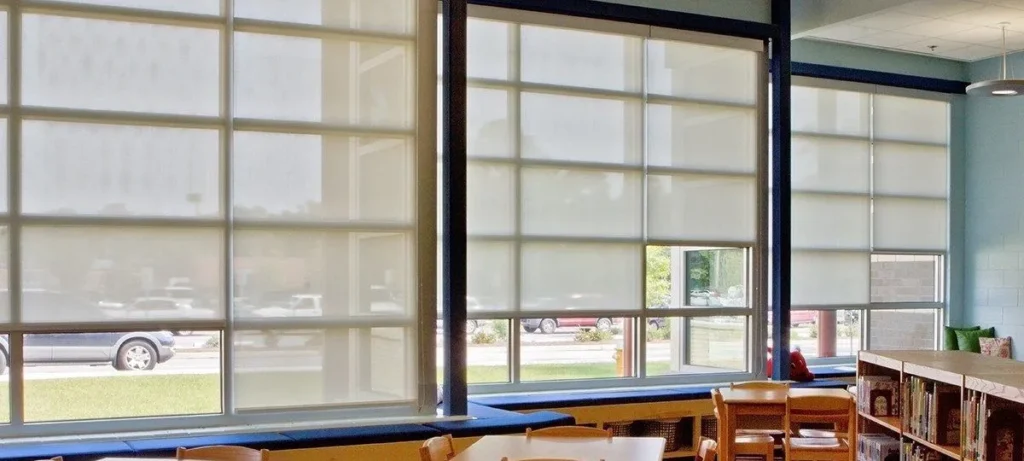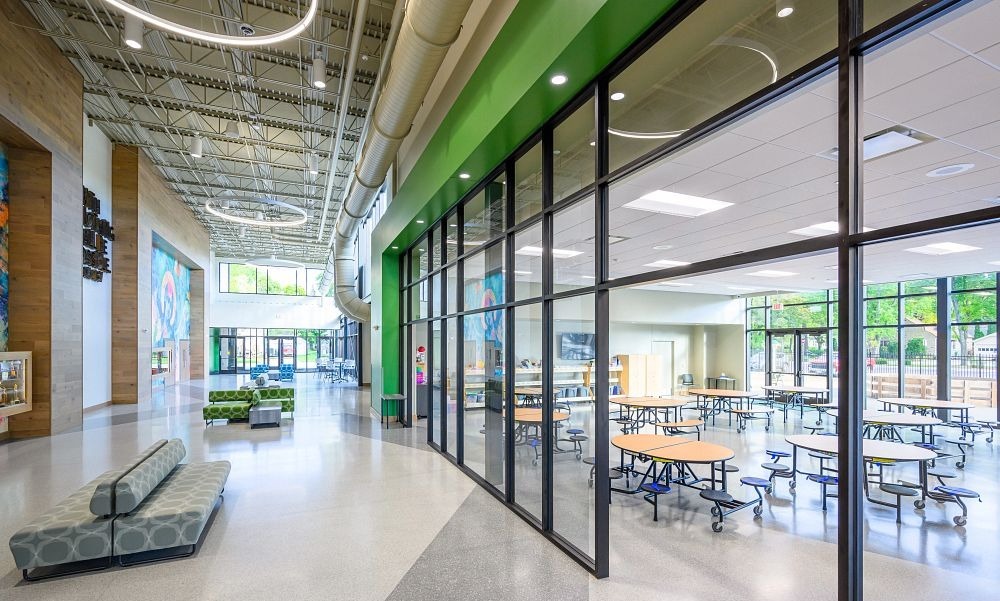Windows are essential to creating a classroom environment that supports comfort, focus, and well-being. Properly designed windows can maximize natural light, enhance ventilation, regulate temperature, and reduce noise, all of which contribute to a better learning atmosphere. This article explores the best window design practices for creating comfortable and healthy classrooms, highlighting how schools can create spaces that foster student well-being and academic success.
1. Maximizing Natural Light for Improved Mood and Focus
Natural light has been shown to improve mood, boost alertness, and enhance cognitive function, making it essential in classrooms. Windows designed to bring in natural daylight create an inviting, bright space where students feel engaged and energized.
- Design Tips: Position large windows strategically, ideally facing south or west, to allow consistent natural light throughout the day. Low-E glass coatings help manage light levels and reduce glare, allowing for clear, comfortable lighting.
- Impact on Students: Classrooms with natural light encourage better focus and engagement, supporting a positive learning experience. Studies show that students in well-lit classrooms perform better academically and experience less fatigue.

2. Ensuring Proper Ventilation for Health and Alertness
Fresh air is essential for reducing indoor pollutants, regulating humidity, and maintaining optimal air quality. Windows that support ventilation create a healthier learning environment, reducing the spread of germs and supporting better respiratory health.
- Design Tips: Operable windows, such as casement or awning styles, provide easy-to-control ventilation and allow fresh air circulation. Position windows to create a cross-breeze, which helps move stale air out and fresh air in. This is especially effective for classrooms where high occupancy can lead to increased CO₂ levels.
- Impact on Students: Improved ventilation reduces drowsiness, headaches, and other symptoms of poor indoor air quality. Fresh air circulation keeps students alert, focused, and comfortable throughout the day, contributing to better overall well-being.
3. Temperature Control for Year-Round Comfort
Maintaining a stable temperature is crucial in classrooms, as discomfort from overheating or cold drafts can distract students and reduce concentration. Windows that provide insulation and temperature control help create a comfortable environment that fosters learning.
- Design Tips: Double or triple-glazed windows with thermal break frames offer excellent insulation, reducing heat transfer in and out of the classroom. For warmer climates, Low-E coatings or tinted glass can reduce solar heat gain, keeping classrooms cooler. Adjustable window coverings, such as blinds or shades, also help regulate temperatures.
- Impact on Students: Stable, comfortable temperatures reduce distractions and improve focus, allowing students to concentrate on their tasks without physical discomfort. Temperature regulation is especially important in climates with extreme seasonal changes.
4. Noise Reduction for a Quiet Learning Environment
Excessive noise from outside sources, like traffic or playgrounds, can disrupt classroom activities and reduce focus. Windows with soundproofing features help block out external noise, creating a quiet, peaceful learning space.
- Design Tips: Laminated or double-glazed windows with soundproofing interlayers are effective at reducing noise infiltration. Frame materials like vinyl or fiberglass also help dampen sound, while proper sealing around window edges prevents noise leaks.
- Impact on Students: Reduced noise levels minimize distractions and create a calm environment where students can focus on their studies. A quieter classroom improves comprehension, concentration, and overall academic performance.

5. UV Protection for Eye and Skin Safety
Excessive UV exposure can cause eye strain, headaches, and even skin issues over time. Windows with UV-blocking features protect students and teachers from harmful ultraviolet rays while allowing natural light into the classroom.
- Design Tips: Use Low-E or UV-filtering glass to allow visible light in while blocking out 99% of UV rays. Window treatments like blinds or shades can also be adjusted to control light levels and prevent direct sunlight from entering during peak hours.
- Impact on Students: UV protection reduces the risk of eye strain and potential skin damage, creating a safer and more comfortable environment. It also prevents classroom materials and furnishings from fading, helping maintain a fresh, inviting classroom aesthetic.
6. Choosing Non-Toxic, Eco-Friendly Materials
Materials used in window frames and finishes can impact indoor air quality. Selecting eco-friendly, non-toxic materials reduces indoor pollutants and supports a healthier learning environment for students and staff.
- Design Tips: Opt for windows made from sustainable materials like recycled aluminum or responsibly sourced wood. Avoid materials that emit VOCs (volatile organic compounds), as these can negatively impact indoor air quality. Non-toxic paints and finishes also help keep classrooms free from harmful chemicals.
- Impact on Students: Eco-friendly materials promote a cleaner, healthier environment, reducing exposure to allergens and indoor pollutants. Improved indoor air quality supports respiratory health, focus, and overall well-being.
7. Incorporating Adjustable Window Coverings for Versatile Lighting Control
Different classroom activities may require varied lighting conditions, from bright light for reading and writing to dimmer light for presentations. Adjustable window coverings allow teachers to control the amount of light entering the room, creating a flexible and comfortable learning environment.
- Design Tips: Install blinds, shades, or curtains that can easily be adjusted based on the time of day and classroom activities. Light-filtering shades or solar blinds are excellent choices, as they manage glare without blocking natural light entirely.
- Impact on Students: Versatile lighting control helps reduce eye strain and improves visual comfort. Students and teachers can adjust the light based on needs, supporting a comfortable and adaptable space for various learning activities.

8. Installing Windows at Optimal Heights and Sizes for Accessibility
Window placement and size can impact both natural light distribution and accessibility. Properly positioned windows ensure that all students benefit from natural light and fresh air while enhancing the overall classroom design.
- Design Tips: Position windows at a height and size that allow ample light to reach all areas of the room, avoiding dark corners. Larger windows can be used on one side of the room to balance light distribution, while higher windows reduce glare and increase privacy.
- Impact on Students: Accessible windows promote inclusivity, allowing all students to enjoy natural light and fresh air. This design consideration fosters an inviting classroom atmosphere that contributes to a positive, inclusive learning experience.
Conclusion
Designing windows for optimal comfort and well-being in classrooms is an investment in student success and health. By maximizing natural light, ensuring proper ventilation, maintaining comfortable temperatures, and reducing noise, schools can create spaces that support focus, engagement, and learning. Thoughtfully designed windows not only enhance the physical classroom environment but also contribute to a positive, sustainable educational experience that benefits students and staff alike.


